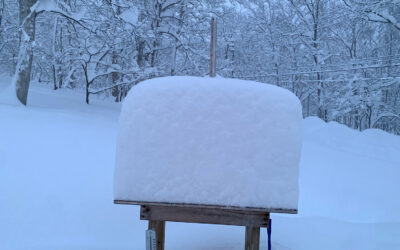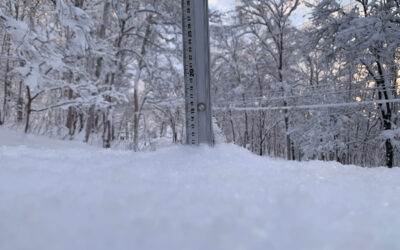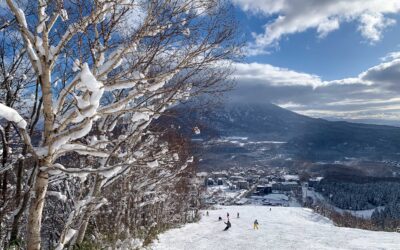It’s a dream of many to make the most of their visit to Niseko and travel and see a little (or a lot) more of Japan. And rightly so, it is a truly beautiful country, and travel by car is cheap, safe and easy. This was our dream, and my wife and i made it a reality in 2011.
It all started with the purchase of a Honda Supercub (small scooter) and blue-sky dreaming.
But, practicalities quickly justified the purchase of a van – a long-wheelbase Mitsubishi Delica. It was subsequently gutted and fitted out with a makeshift bed and cupboards – all for less than ¥5000. It would have been fun to do it on a bike (and many people do), however for us both to ride on the same 90cc bike was unrealistic – Japan is quite a mountainous country. Since the bike had already been purchased, we decided to bring it along, making use of it in larger towns and visits to islands.
Due to the long, stretched out geography of Japan, there weren’t many realistic options for times to travel. We left Niseko in the middle of Hokkaido summer, following the comfortable weather south, and returned 75 days later at the start of winter – just in time to start work.
Like all travel, it took a few days to finally get into a rhythm. We found that most rural towns had a michi-no-eki, which could be literally translated as ‘road station’. These michi-no-eki would have a large car park that allowed overnight parking, as well as a 24hr bathroom. During the day it would have markets and showcase produce and tourism of the local region. These michi-no-eki were so effective and abundant that we didn’t pay accommodation for a single night – that is, until we were separated from our car in Okinawa.
Due to the population density of Japan, it was very easy to shop for food. It was quite rare if we didn’t pass by a supermarket on a daily basis, which allowed us to purchase fresh food daily, and negated the need for a fridge or a large cooler box. The bonus fact that most Japanese supermarkets offer free ice (to keep shopping cool for the transit home) offered yet another saving. Supermarkets also often had microwaves that could be used to heat instant rice, or other instant food products. Bonus!
Another bonus is the Japanese bathing culture. Just as it was unusual to go a day without seeing a supermarket, it was also unusual to go a day without passing a public bath (sento) or hot spring (onsen). Some of the more rural areas even had completely natural (and free) onsens. Not only did this help to keep costs of travel down, but they were also some of the highlight experiences of the journey.
Even with the population density of Japan, it was common to find natural sources of spring water between towns to fill bottles with delicious, fresh and free drinking water.
Japan has a bit of an unfair reputation of being expensive, however it’s not really justified. Unsurprisingly our main expense was fuel – though sadly we didn’t keep receipts to be able to track just how much we spent on it (and how much we used). The next most expensive component would have been ferries. Fortunately having the Supercub saved us significant money. However, in retrospect, it would have been cheaper still to have left the Supercub and the Delica in Kagoshima, flown to Okinawa and hired a car.
A ballpark figure was about ¥600,000 (~$6,000 USD) excluding the purchase cost of the vehicles, which isn’t bad for nearly three months of travel.
There are several options for people to get a vehicle, and while it’s not difficult, purchasing a car is probably the hardest part of doing a journey like this. We purchased ours from a friend who was departing Japan for the sum of ¥150,000. We then had to spend another ¥150,000 on repairs and shaken (registration/compulsory insurance/safety inspection). Shaken is probably the biggest expense when purchasing a used car and is required every two years. The 90cc Supercub was purchased directly from a bike dealer in Sapporo for ¥120,000. Of course, you then have to sell the vehicle at the end of it all. It is possible to hire a van, though there aren’t as many options for ready-made campervans as you would find in somewhere like Australia, New Zealand or Europe.
So, having covered most of the logistics, time to talk about the fun! It was the first time that we had travelled with such flexibility. There was no real plan or itinerary, other than get to Okinawa in the very south of Japan and see as much of Japan as we could along the way. We started from Sapporo and drove as far as we could each day, stopping or making detours if something took our fancy.
Having lived in Hokkaido for a few years, I had grown very proud of my second home, so my bias may show when I talk about how beautiful a place Hokkaido is. Due to the remoteness and the scale of the winters, it was one of the last places Japan colonised. As such, there is still so much open nature to be explored and enjoyed. From amazing mountains, lakes, rivers, islands and coastlines. It truly is a nature lover’s paradise, no matter the season.
However, for all the beauty that is in Hokkaido, it lacks a certain ‘Japanese cultural feel’. It’s hard to explain, but even for my Hokkaido-born Japanese wife, felt like we were finally in Japan once we arrived on Honshu (the main Japanese island). The buildings were no longer modern/western, the roads were narrow and winding, and people spoke with thick unintelligible accents, even the food changed. We also started stopping for cultural attractions, like restaurants, shrines and castles – not just the natural ones.
Of course, there were no shortage of beautiful natural locations in Honshu. Stand-out locations include: the spectacular Japanese alps at Kamikochi; the waterfalls at Oirase; the cliffs at Hotokegaura; the thatched villages at Hida, the traditional beauty at Kyoto; the ruggedness of Shikoku; the incredible and overwhelming powerful sadness of the Hiroshima Peace Museum; the uniqueness of the deserted Battleship Island; and tropical beauty of Okinawa.
For me, large cities hold little interest, so unsurprisingly we didn’t spend much time in them. The roads were slow with congestion and it became impossible to find free overnight parking – convenience stores don’t appreciate people sleeping in their car parks. But, thankfully having the Supercub we were able to park the van on the outskirts of towns and ride in on the bike to explore the city during the day.
Another major boon for travelling Japan during summer months is the abundance of festivals that take place all around Japan. It was always an incredible experience when we managed to stumble upon a small town’s festival. There was so much variety, from the pantomime of the Noboribetsu Hell Festival, to the local festival taking place in Nozawa, and the insane Keshiwada Danjiri Matsuri just south of Osaka.
It isn’t a common way to travel, and we saw very few other people doing the same outside of Hokkaido. If you’re looking to see a little more of Japan, especially the areas that few other tourists get to visit, then this is the best way to make it happen. It is easier than you might think, so don’t put it off!
The full daily blog of the 75-day 11,000km journey can be found at japanroadtrip.wordpress.com























































